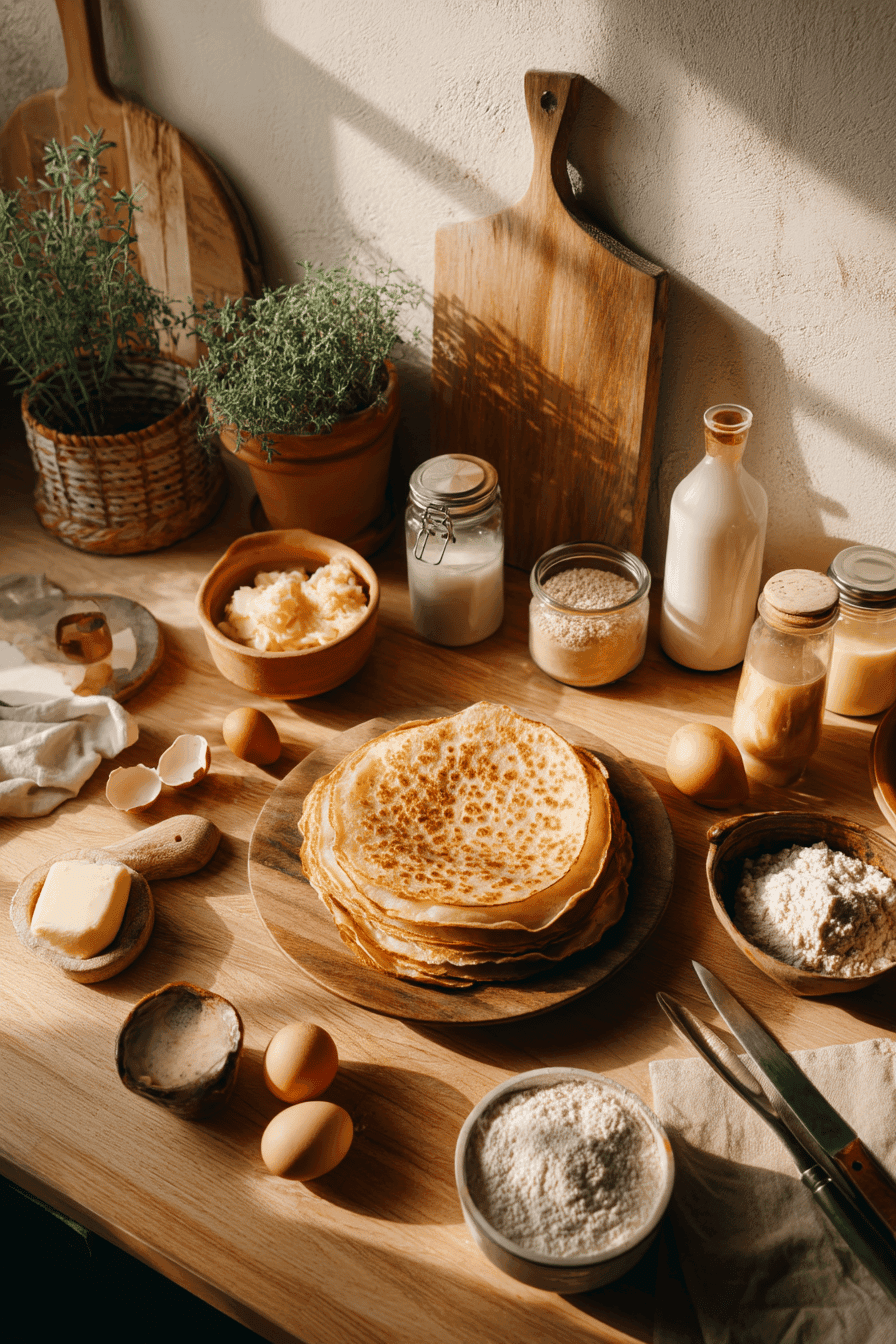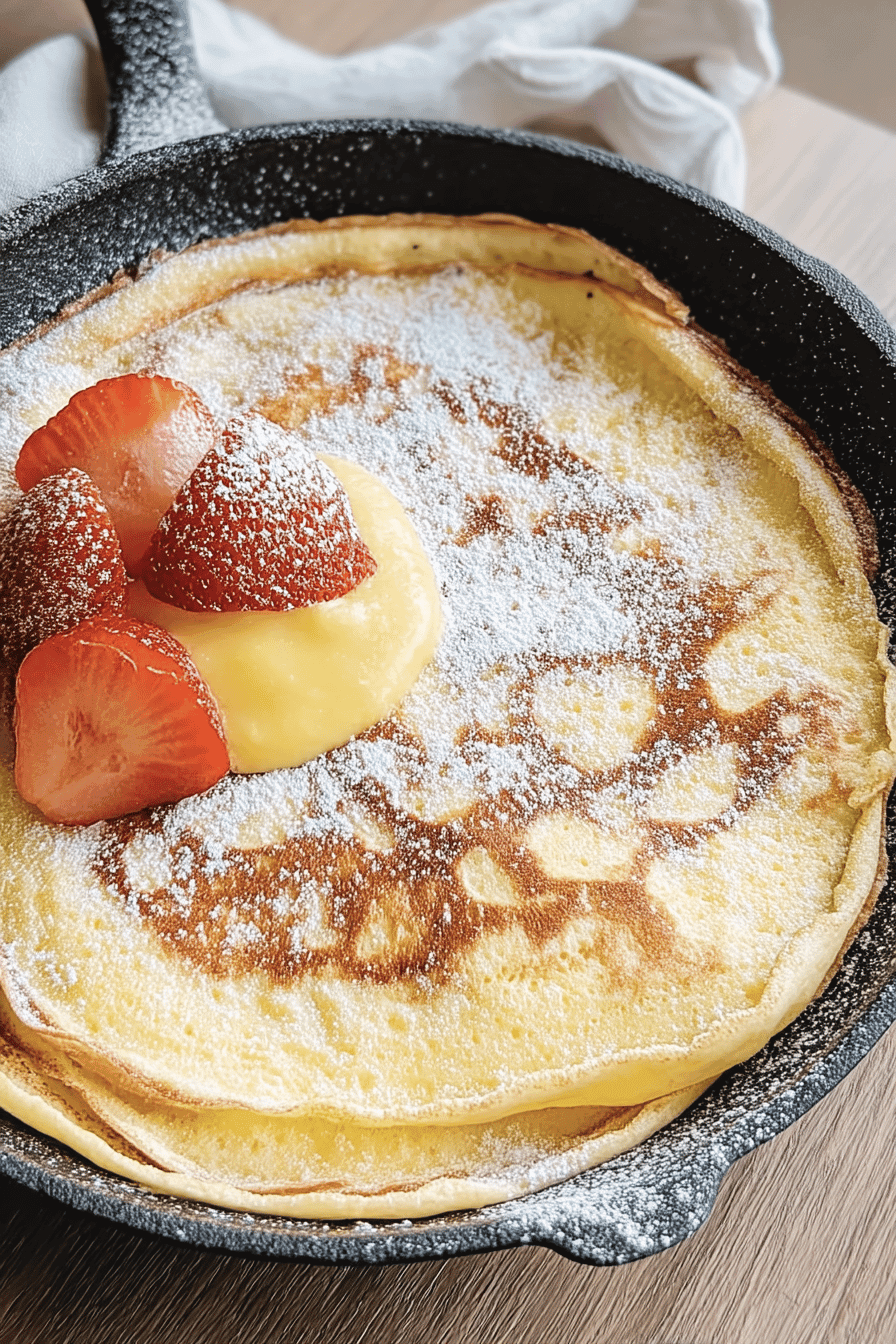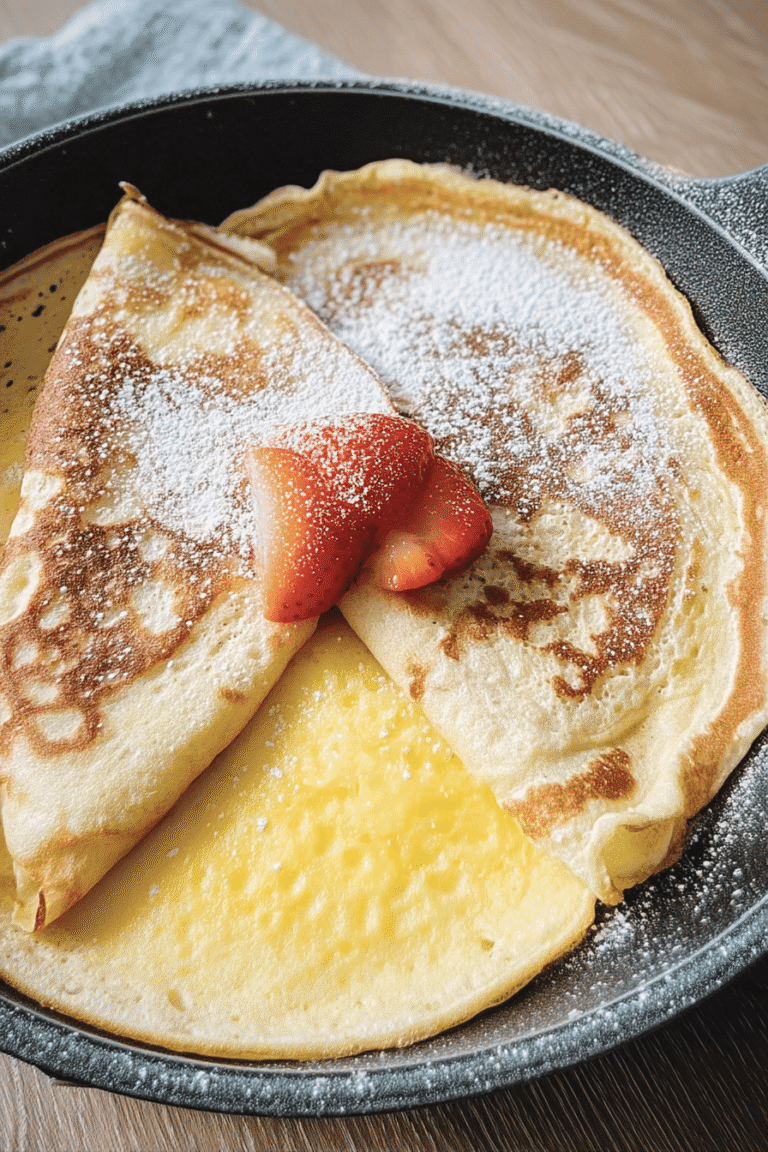Benefits and Advantages of German Pancakes
German pancakes offer a delightful combination of simplicity and nutritional benefits, making them a favorite choice for breakfast enthusiasts. Their ease of preparation is a significant advantage, with minimal ingredients and straightforward steps allowing even novice cooks to achieve delicious results quickly. Known for their light, fluffy texture, German pancakes puff impressively during baking and can be customized with various toppings such as fresh fruit, syrup, or powdered sugar to suit any palate.
From a nutritional standpoint, this dish can be tailored to support a balanced diet by incorporating wholesome ingredients or substitutions like whole-grain flours or plant-based milks. Their versatility enables adaptation to different dietary requirements, enhancing appeal across a wide audience. They provide a satisfying yet light breakfast or brunch option that blends flavor and nutrition effortlessly, making German pancakes an excellent choice for modern dietary lifestyles.
Jump to:
- Benefits and Advantages of German Pancakes
- Essential Ingredients for German Pancakes
- Dietary Substitutions to Customize Your German Pancakes
- How to Prepare the Perfect German Pancakes: Step-by-Step Guide
- Mastering German Pancakes: Advanced Tips and Variations
- How to Store German Pancakes: Best Practices
- Nutritional Value of German Pancakes
- FAQs: Frequently Asked Questions About German Pancakes
- What are German pancakes and how do they differ from regular pancakes?
- Can I prepare German pancake batter ahead of time and how should I store it?
- What type of pan should I use for German pancakes?
- Can I make German pancakes gluten-free or with alternative flours?
- What are popular toppings for German pancakes and how do they affect the taste?
- Simple and Delicious German Pancakes: A Step-by-Step Recipe Guide
- Ingredients
- Instructions
- Last Step:
- Notes
- Nutrition
- Did you make this recipe?
Essential Ingredients for German Pancakes
- 6 large eggs
- 1 cup (240 ml) milk
- 1 cup (120 g) all-purpose flour
- Dash of salt
- 1 teaspoon (5 ml) vanilla extract
- 4 to 5 tablespoons (56 to 70 g) butter
Each ingredient plays a key role: eggs bind and provide lift; milk adds moisture; flour creates structure; salt enhances flavors; vanilla adds subtle aroma; and butter contributes a golden crust and richness. For those seeking dietary modifications, plant-based alternatives for eggs and milk can be incorporated seamlessly while preserving the pancake’s signature puff and texture.

Dietary Substitutions to Customize Your German Pancakes
Adapting German pancakes for special diets is straightforward using common substitutions:
- Vegan options: Replace eggs with flaxseed or chia seed “eggs” (1 tablespoon ground seed mixed with 3 tablespoons water per egg), and use plant-based milks such as almond or oat milk.
- Gluten-free: Swap all-purpose flour with gluten-free blends like rice or almond flour. Adjust liquid ratios slightly to maintain batter consistency.
- Low-fat and calorie-conscious: Reduce or replace butter with cooking sprays or a small amount of oil, and omit sugar to maximize the pancake rise.
- Lactose intolerance: Choose lactose-free or dairy-free milks and vegan butter substitutes to avoid dairy.
These substitutes allow German pancakes to remain delicious and accessible, accommodating a wide variety of dietary preferences without compromising the puffed, golden quality that makes them special.

How to Prepare the Perfect German Pancakes: Step-by-Step Guide
- Preheat the oven to 425°F (220°C). Place an ungreased 9×13 inch (23×33 cm) metal baking dish or cast iron skillet inside the oven to heat up.
- Combine eggs: In a blender or large bowl, whisk 6 large eggs until frothy to help create the iconic puff.
- Add liquids: Gradually add 1 cup milk and a dash of salt to the eggs while blending or whisking to combine smoothly.
- Incorporate dry ingredients: Slowly add 1 cup flour and 1 teaspoon vanilla extract, blending or whisking just until smooth, avoiding overmixing to maintain a light batter.
- Prepare the baking dish: Carefully remove the hot dish from the oven, add 4 to 5 tablespoons of butter, allowing it to melt and coat the bottom evenly. Rub some melted butter on the pan sides for even puffing.
- Pour batter: Immediately pour the batter into the sizzling hot dish and return it to the oven.
- Bake: Bake for 22 to 27 minutes until the pancake is puffed and golden brown on the edges.
- Serve: Serve immediately, sprinkled with powdered sugar and accompanied by toppings such as syrup, fresh lemon juice, fruit, butter, whipped cream, or chocolate chips.
For dietary variations, use vegan egg replacements and plant-based milk in the batter, and consider gluten-free flour blends if needed. Adjust bake time slightly with alternative flours to achieve consistent puff and texture.
“Using a hot skillet and melting butter in the oven before adding batter is key to creating the classic puffy and crispy edges of German pancakes.”
Discover more about How to Make German Pancakes for additional tips and tricks.
Mastering German Pancakes: Advanced Tips and Variations
To perfect your German pancakes, start by using room temperature ingredients; this helps the batter blend more smoothly and results in a better rise. For extra lightness, separate the eggs and whip the whites to soft peaks before folding them gently into the batter. This technique adds volume and creates a delicate texture. Enhance flavor by experimenting with additions like vanilla extract, cinnamon, or nutmeg for warm, aromatic notes.
For a savory version, omit sugar and toss in fresh herbs, sautéed mushrooms, or cheese for a satisfying twist. Try different toppings such as caramelized apples, fresh berries, or a dollop of yogurt to change the flavor profile while keeping the pancake’s characteristic puffiness. Applying a cast-iron skillet in your preparation improves heat retention and produces a crispier crust with a golden finish. You can also use alternative flours like buckwheat or spelt, which not only add unique flavors but also offer varied nutritional benefits.
“Lightly folding whipped egg whites and choosing the right pan are key secrets to achieving tall, fluffy German pancakes that impress.”
For more detailed guidance, see How to Make German Pancakes.
How to Store German Pancakes: Best Practices
To keep your German pancakes fresh and flavorful, store them in an airtight container after they have fully cooled. For short-term storage, refrigerate pancakes for up to three days. If you plan on keeping them longer, freeze the pancakes by layering parchment paper between each one to prevent sticking, then seal them in a freezer-safe bag or container. Frozen pancakes maintain quality for up to two months.
When reheating, use a preheated oven at 350°F (175°C) for 10-15 minutes or toast them lightly in a skillet. These methods help restore crispiness and prevent sogginess. Avoid microwaving to maintain texture, and reheat only the portion you plan to eat to preserve freshness.
“Proper layering and reheating methods keep German pancakes tasting freshly baked even days after cooking.”
Nutritional Value of German Pancakes
| Nutrient | Amount per Serving | Health Benefit |
|---|---|---|
| Calories | 212-300 kcal | Provides balanced energy |
| Carbohydrates | 17-21 g | Fuel for daily activity |
| Protein | 7-10 g | Supports muscle repair |
| Fat | 13-18 g (Saturated fat 3-9 g) | Contributes to satiety and flavor |
| Cholesterol | 94-231 mg | Aids hormone production (moderate intake recommended) |
| Sodium | 77-197 mg | Regulates fluid balance; watch if sensitive |
| Vitamin A | 270-720 IU | Supports vision and immune function |
| Calcium | 38-92 mg | Important for bone health |
| Iron | 0.9-2.1 mg | Essential for oxygen transport in blood |
This well-rounded nutritional profile makes German pancakes a pleasant option for breakfast or brunch. Using whole-grain or gluten-free flours can further increase fiber content, supporting digestive health. For more info on the benefits of eggs, a primary ingredient, visit Nutritional Information About Eggs.

FAQs: Frequently Asked Questions About German Pancakes
What are German pancakes and how do they differ from regular pancakes?
Can I prepare German pancake batter ahead of time and how should I store it?
What type of pan should I use for German pancakes?
Can I make German pancakes gluten-free or with alternative flours?
What are popular toppings for German pancakes and how do they affect the taste?

Simple and Delicious German Pancakes: A Step-by-Step Recipe Guide
🥞 Enjoy the fluffy, puffy delight of these simple German pancakes, perfect for breakfast or brunch.
🧈 A quick and delightful recipe that delivers a crispy crust with a tender inside—everyone will love it!
- Total Time: 30-35 minutes
- Yield: Serves 4
Ingredients
6 large eggs
1 cup (240 ml) milk
1 cup (120 g) all-purpose flour
Dash of salt
1 teaspoon (5 ml) vanilla extract
4 to 5 tablespoons (56 to 70 g) butter
Instructions
1. Preheat the oven to 425°F (220°C).
2. Place the butter in an ungreased 9×13 inch (23×33 cm) metal baking dish or cast iron skillet and put it in the oven as it preheats to melt the butter and heat the pan.
3. In a blender or bowl, combine eggs, milk, flour, salt, and vanilla extract. Blend or whisk until the batter is smooth, but avoid overmixing.
4. Pour the batter directly into the hot baking dish over the melted butter and gently rub butter on the pan sides for even puffing.
5. Bake for 22 to 27 minutes until the edges are golden brown and the pancake has puffed up impressively. The pancake will deflate slightly as it cools.
6. Serve warm, sprinkled generously with powdered sugar, and enjoy with your favorite toppings.
Last Step:
Please leave a rating and comment letting us know how you liked this recipe! This helps our business to thrive and continue providing free, high-quality recipes for you.Notes
🍳 Use a metal baking dish or cast iron skillet for optimal puffing; glass pans may yield less rise.
🕒 Preheating the pan with butter creates a crispy crust and enhances puffing—avoid microwaving the butter.
✨ Batter can be prepared a day ahead and refrigerated; whisk gently before using.
- Prep Time: 5 minutes
- Cooling: 5 minutes
- Cook Time: 22-27 minutes
- Category: Breakfast, Brunch
- Method: Baking
- Cuisine: German
- Diet: Vegetarian
Nutrition
- Serving Size: 1 slice
- Calories: 256
- Sugar: 3g
- Sodium: 137mg
- Fat: 16g
- Saturated Fat: 8g
- Unsaturated Fat: 8g
- Trans Fat: 0g
- Carbohydrates: 19g
- Fiber: 1g
- Protein: 8g
- Cholesterol: 162mg







